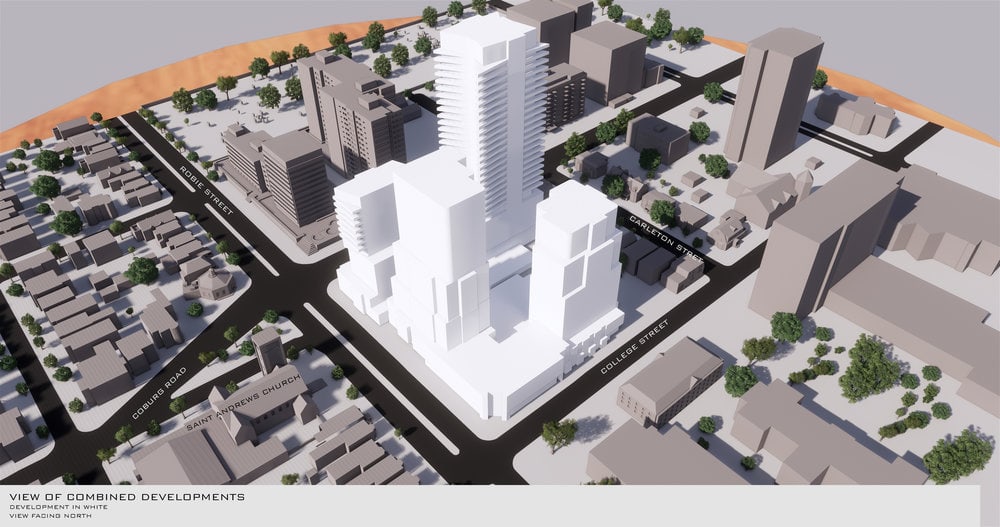
KJIPUKTUK (Halifax) – Two Halifax developers, independently from one another, are proposing tall and massive building complexes side by side on the very same city block.
These proposals lack transparency in terms of what the final result will look like. The information provided to the public is piecemeal. We see each proposal separately, sometimes weeks or months apart, and never get to grasp what our city will look once both buildings are constructed.
Now, thanks to the hard work of architectural student Hadrian Laing, there is a built-to-scale model that encompasses the entire neighbourhood, its current buildings and the two proposed developments.

This scale-model, dozens of hours in the making, was first showcased yesterday at a media conference hosted by Development Options Halifax, an organization which wants to offer alternatives to the massive developments Halifax seems so fond of.
The proposals are completely out of context with the current neighbourhood, which features many original Victorian buildings, still privately owned, says Laing.
The developments are out-of scale, will add heavy numbers for traffic egress, a heavier load on an old water and sewage system, and provide little in the way of affordable housing—the buildings aim at high-end retail and high-end residential units,
The Halifax Centre Plan, recently finalized, identifies the need to accommodate 400 new residents in the area. Peggy Cameron, a member of the Development Options campaign, suggests that an 18 storey building that has already been accepted across the street would provide 70% of those numbers. The rest could be small infill, she says, and it ‘doesn’t have to be ‘traditional’, it can be ‘exciting’.
At the conference, held at Glitter Bean cafe on Spring Garden Rd, attendees looked out the picture windows past large photo mockups of what Carlton street will look like after these towering developments are built.
“You can’t rebuild Victorian, so we have to make careful considerations,” Laing said.
“These developments are at the final stages of the proposal process—something the public is given shifting and non-transparent information about. People are pretty ‘intuitive’, says Laing, “and they will recognize when something doesn’t fit into the surroundings.”
The next step in the process will be review by the Heritage Advisory Committee in May, which will then be followed by final presentation to Mayor and Council. Even at this stage, input from the public can inform decisions.
The Development Options Halifax campaign hopes citizens will take action by writing letters, and signing a petition.
Check out the Development Options website, like them on Facebook, and follow them on Twitter.
With a special thanks to our generous donors who make publication of the Nova Scotia Advocate possible.
Subscribe to the Nova Scotia Advocate weekly digest and never miss an article again. It’s free!



